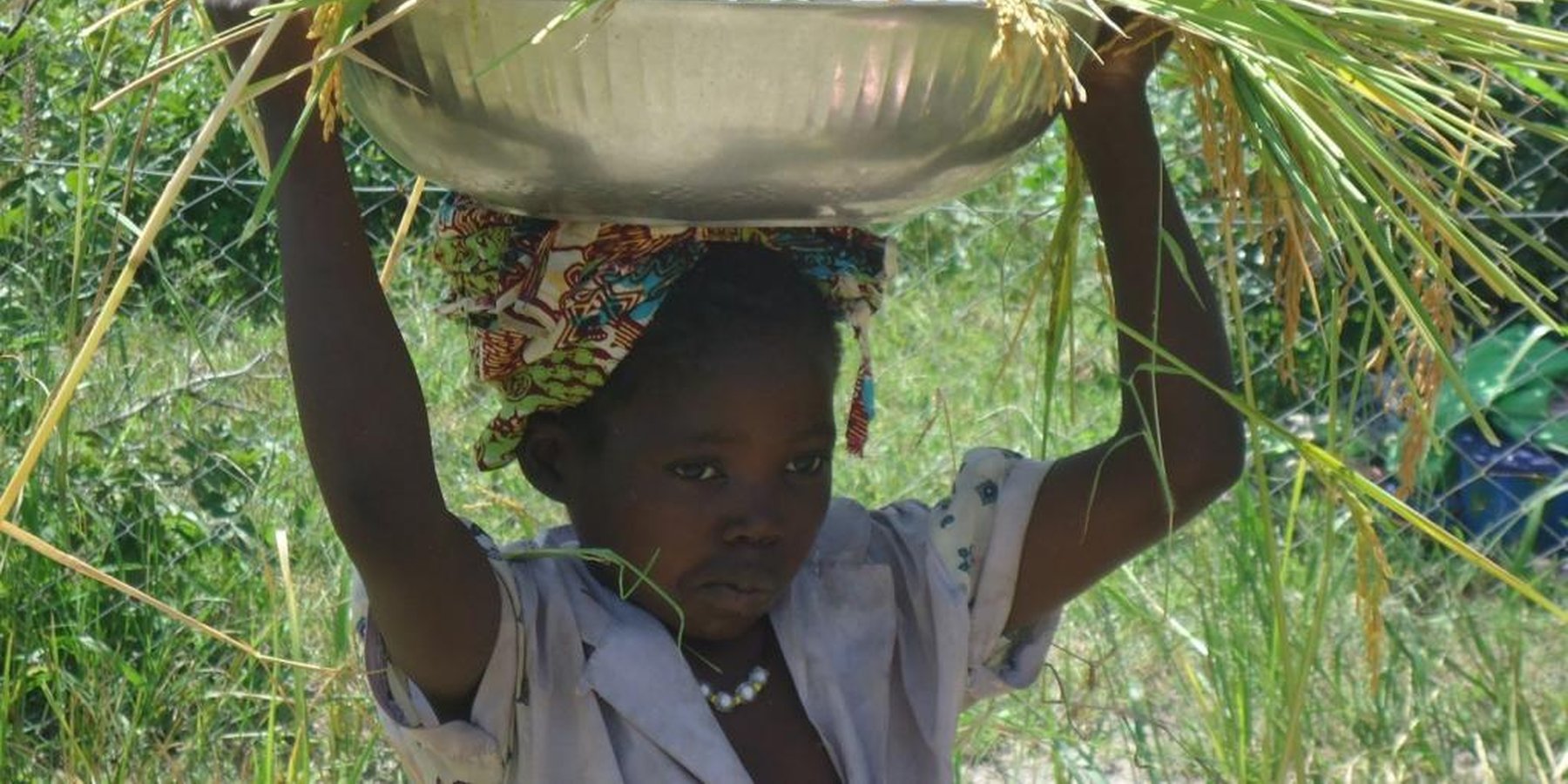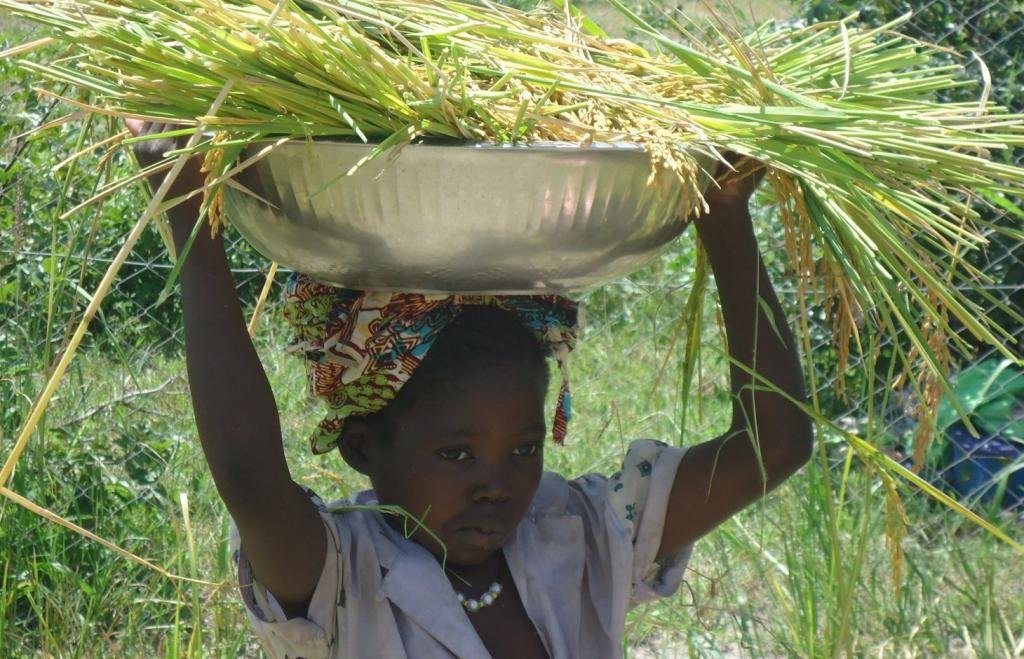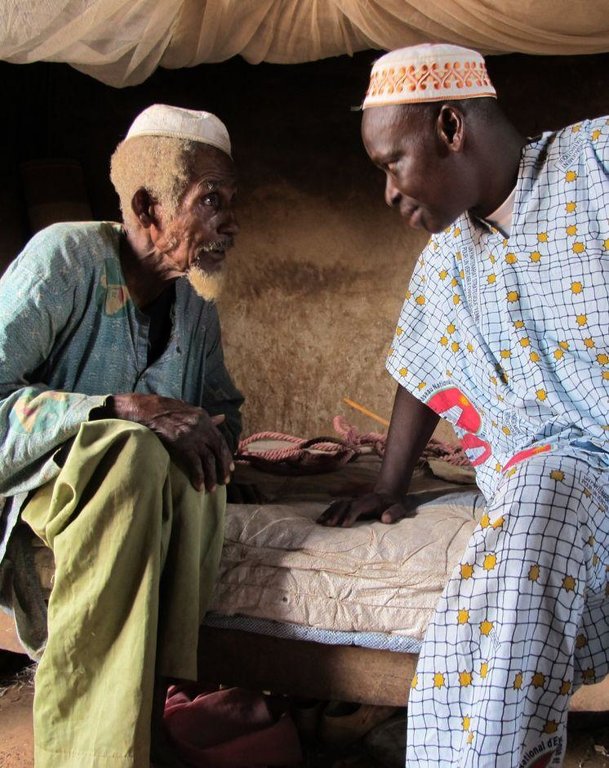Agricultural credit and start-up funding for small-scale irrigation cooperatives [Mali]
- Criação:
- Atualização:
- Compilador/a: Dieter Nill
- Editor: –
- Revisor: Laura Ebneter
Crédit agricole et fonds de démarrage pour les coopératives dans l’irrigation de proximité
approaches_2508 - Mali
Veja as seções
Expandir tudo Recolher tudo1. Informação geral
1.2 Detalhes do contato das pessoas capacitadas e instituições envolvidas na avaliação e documentação da abordagem
Especialista em GST:
Dembele Célestin
celestin.dembele@helvetas.org
HELVETAS - Swiss Intercooperation
Mali
Especialista em GST:
Doumbia Moussa
mtdoumbia@yahoo.fr
Association for the Development and Protection of the Environment (ADEPE Mali)
Mali
Tamini Jacques
jacques.tamini@helvetas.org
HELVETAS - Swiss Intercooperation
Mali
Nome da(s) instituição(ões) que facilitou(ram) a documentação/avaliação da Abordagem (se relevante)
Deutsche Gesellschaft für Internationale Zusammenarbeit (GIZ) GmbH (GIZ) - AlemanhaNome da(s) instituição(ões) que facilitou(ram) a documentação/avaliação da Abordagem (se relevante)
HELVETAS (Swiss Intercooperation)1.3 Condições em relação ao uso da informação documentada através de WOCAT
Quando os dados foram compilados (no campo)?
01/07/2012
O/a compilador/a e a(s) pessoa(s) capacitada(s) aceitam as condições relativas ao uso de dados documentados através da WOCAT:
Sim
2. Descrição da abordagem de GST
2.1 Descrição curta da abordagem
Providing lowland farmer cooperatives with self-managed, self-renewing financial resources for the purpose of facilitating members’ access to farming inputs.
2.2 Descrição detalhada da abordagem
Descrição detalhada da abordagem:
Once the infrastructure has been put in place, cooperatives are supported in drawing up their cropping plans (rice and vegetable growing). This support is provided in the context of value enhancement. The cropping plans include forecasting in relation to sites and the input needs of member farmers. The funds provided by the project are targeted towards supporting the empowerment of cooperatives and constitute non-repayable grants. Cooperatives use these financial resources to provide their members with loans to grow crops. When these crops are sold, the loans are repaid to the cooperatives along with a small percentage of interest to renew the loan facility. The loan awarding system, interest rates and repayment deadline are clearly defined by the cooperative. Women have access to gender-specific mechanisms, such as a facility to access credit without providing any personal contribution. The grant is awarded following a capacity-building process focusing on the management and governance of the cooperative. Following negotiations, the programme funds the cooperative’s cropping plan on the basis of a collaboration agreement. Support with managing the funds is delivered by a consultant. The grant is paid into the cooperative’s bank account. The cooperative organises the procurement of inputs, in collaboration with the service provider. Loans are provided in kind (seed, fertilisers, pesticides, etc.) rather than as cash. Those tasked with managing the cooperative are given training in how to use a range of management tools (drawing up cropping plans; keeping stock inventory, loan and repayment records; managing removal and delivery receipts; etc.). At the end of the growing season, the loans are repaid in kind (seed) and in cash (fertilisers and fungicides) in accordance with a predetermined timetable, thus replenishing the fund.
The structuring, organisational strengthening and management capacity building activities are delivered by the consultant from the outset of the scheme’s implementation phase. Groups of actors are encouraged to organise themselves as cooperatives (women and men rice growers, vegetable and other kinds of growers, etc.). These cooperatives, with the support of the consultancies, act as the representative for managing funds. They draw up their cropping plans (list of member producers and their farmland, and evaluation of the input requirements requested by producers) and define the system for awarding loans (the access conditions, repayment methods, timetables and interest levels are set by the cooperatives). An agreement setting out the ways in which the programme will provide support through a contracted service provider is signed. Funds are paid into the relevant bank account and the cooperative then procures the inputs. The cooperative managers, using the management tools at their disposal, distribute the inputs to producers. A public audit is organised to inform members about the status of loans. The recovery of loans with interest makes it possible to replenish the fund (with payments paid into the cooperative’s bank account). The public audit into the loan repayment situation is a medium for deploying coercive measures to recover unpaid loans.
The cooperatives catalogue needs, coordinate the preparation of the cropping plan, set the access conditions for loans, undertake procurement and ensure the recovery of loans from members. The communes participate in debriefings, facilitate the settlement of misunderstandings between producers and cooperatives, and monitor technical support provision. The intermunicipal body facilitates communication and negotiation between communes and the programme. Consultancies deliver management training and advisory support on technical aspects of farming, and facilitate the procurement of inputs suited to the farming condition of each site. Technical services participate in evaluation meetings and act as advisors to the service providers and programme team.
2.3 Fotos da abordagem
2.5 País/região/locais onde a abordagem foi aplicada
País:
Mali
Região/Estado/Província:
Mali
Especificação adicional de localização:
Bougouni, Kolondiéba, Yanfolila
2.6 Datas de início e término da abordagem
Indique o ano de início:
2008
2.7 Tipo de abordagem
- Baseado em projeto/programa
2.8 Principais metas/objetivos da abordagem
Providing lowland farmer cooperatives with self-managed, self-renewing financial resources for the purpose of facilitating members’ access to farming inputs.
The SLM Approach addressed the following problems: lack of cash to invest in SLM
2.9 Condição que propiciam ou inibem a implementação de tecnologia/tecnologias aplicada(s) segundo a abordagem
Disponibilidade/acesso a recursos e serviços financeiros
- Inibitivo
lack of cash to invest in SLM
Treatment through the SLM Approach: Providing lowland farmer cooperatives with self-managed, self-renewing financial resources for the purpose of facilitating members’ access to farming inputs.
3. Participação e papel das partes interessadas envolvidas
3.1 Partes interessadas envolvidas na abordagem e seus papéis
- Usuários de terra/comunidades locais
- Especialistas em GST/ consultor agrícola
- Organização não governamental
- Governo local
- Governo nacional (planejadores, responsáveis pelas decisões)
3.2 Envolvimento do usuários de terra/comunidades locais nas diferentes fases da abordagem
| Envolvimento do usuários de terra/comunidades locais | Especifique quem estava envolvido e descreva as atividades | |
|---|---|---|
| Iniciação/motivação | Passivo | |
| Planejamento | Participativo | |
| Implementação | Participativo | |
| Monitoramento/avaliação | Participativo | |
| Research | Passivo |
3.4 Decisão sobre a seleção de tecnologia/tecnologias de GST
Especifique quem decidiu sobre a seleção de tecnologia/tecnologias a serem implementadas:
- Principalmente usuários da terra, apoiados por especialistas em GST
Explique:
Decisions on the method of implementing the SLM Technology were made by mainly by land users supported by SLM specialists
4. Suporte técnico, reforço das capacidades e gestão do conhecimento
4.1 Reforço das capacidades/ formação
Foi oferecida formação aos usuários da terra/outras partes interessadas?
Sim
Especifique quem foi capacitado:
- Usuários de terra
- Equipe de campo/consultores
Tipo de formação:
- Reuniões públicas
- Cursos
Assuntos abordados:
Consultancies deliver management training and advisory support on technical aspects of farming. Those tasked with managing the cooperative are given training in how to use a range of management tools (drawing up cropping plans; keeping stock inventory, loan and repayment records; managing removal and delivery receipts; etc.).
4.2 Serviço de consultoria
Os usuários de terra têm acesso a um serviço de consultoria?
Sim
Especifique se foi oferecido serviço de consultoria:
- nas áreas dos usuários da terra
Descreva/comentários:
Name of method used for advisory service: Providing lowland farmer cooperatives with self-managed, self-renewing financial resources ; A local farming advisory mechanism active in the first few years of the scheme ensures high levels of productivity, which, in turn, facilitates the repayment of loans. Holding public audits to report on accounts ensures that the system is transparent.
Advisory service is quite adequate to ensure the continuation of land conservation activities
4.3 Fortalecimento da instituição (desenvolvimento organizacional)
As instituições foram fortalecidas ou estabelecidas através da abordagem?
- Sim, moderadamente
Especifique a que nível (níveis) as instituições foram fortalecidas ou estabelecidas:
- Local
Especifique o tipo de apoio:
- Financeiro
- Reforço das capacidades/ formação
4.4 Monitoramento e avaliação
Monitoramento e avaliação são partes da abordagem?
Sim
Comentários:
socio-cultural aspects were ad hoc monitored by project staff through observations
economic / production aspects were ad hoc monitored by project staff, land users through measurements
management of Approach aspects were ad hoc monitored by project staff, land users through observations
There were no changes in the Approach as a result of monitoring and evaluation: None
There were no changes in the Technology as a result of monitoring and evaluation: None
4.5 Pesquisa
A pesquisa foi parte da abordagem?
Sim
Especifique os tópicos:
- Sociologia
- Economia/Marketing
- Ecologia
- Tecnologia
5. Financiamento e apoio material externo
5.1 Orçamento anual para o componente de GST da abordagem
Comentários (p. ex. principais fontes de recursos/principais doadores):
Approach costs were met by the following donors: international non-government: 100.0%
5.2 Apoio financeiro/material concedido aos usuários da terra
Os usuários da terra receberam apoio financeiro/material para a implementação de tecnologia/tecnologias?
Sim
Caso afirmativo, especifique tipo(s) de apoio, condições e fornecedor(es):
The funds provided by the project are targeted towards supporting the empowerment of cooperatives and constitute non-repayable grants. Cooperatives use these financial resources to provide their members with loans to grow crops. When these crops are sold, the loans are repaid to the cooperatives along with a small percentage of interest to renew the loan facility. The loan awarding system, interest rates and repayment deadline are clearly defined by the cooperative. Women have access to gender-specific mechanisms, such as a facility to access credit without providing any personal contribution.
5.3 Subsídios para entradas específicas (incluindo mão-de-obra)
Se a mão-de-obra pelos usuários da terra foi uma entrada substancial, isso foi:
- Recompensado com outras formas de apoio material
Comentários:
Loans are provided in kind (seed, fertilisers, pesticides, etc.) rather than as cash.
5.4 Crédito
Foi concedido crédito segundo a abordagem para atividades de GST?
Sim
Especifique as condições (taxa de juros, reembolso, etc):
repayment conditions: The funds provided by the project are used to buy inputs on the basis of the cropping plan. The start-up fund granted by the programme pays for the initial stock. Once this stock has been procured, the inputs are distributed to members according to their stated requirements. The repayment schedule and the amount of interest that must be paid are communicated. Growers’ production activities are supported and monitored by the consultant and the management committee. Following the harvesting and sale of crops, in accordance with the deadline set, the loans are recovered along with their interest payments and the fund is replenished for the following growing season. During the different implementation stages, the cooperative holds public audits in the presence of the commune authorities to report on how the cooperative is being managed; the aim being to build trust between the cooperative and its members.
6. Análise de impactos e declarações finais
6.1 Impactos da abordagem
A abordagem auxiliou os usuários da terra a implementar e manter as tecnologias de GST?
- Não
- Sim, pouco
- Sim, moderadamente
- Sim, significativamente
A local farming advisory mechanism active in the first few years of the scheme ensures high levels of productivity
A abordagem concedeu autonomia aos grupos social e economicamente desfavorecidos?
- Não
- Sim, pouco
- Sim, moderadamente
- Sim, significativamente
Did other land users / projects adopt the Approach?
- Não
- Sim, pouco
- Sim, moderadamente
- Sim, significativamente
The system has been applied in 19 sites across 15 communes in the circles of Bougouni, Kolondiéba and Yanfolila. In total, 2,150 producers – 81% of the farmers identified in the production areas – have benefited from the loan scheme. The approach has been in use since 2008.
Did the Approach lead to improved livelihoods / human well-being?
- Não
- Sim, pouco
- Sim, moderadamente
- Sim, significativamente
Groups of actors are encouraged to organise themselves as cooperatives (women and men rice growers, vegetable and other kinds of growers, etc.). In total, 2,150 producers – 81% of the farmers identified in the production areas – have benefited from the loan scheme.
Did the Approach help to alleviate poverty?
- Não
- Sim, pouco
- Sim, moderadamente
- Sim, significativamente
70% of the beneficiaries have improved their production levels. This management experience enables farmers to operate as entrepreneurs and to accurately assess their profitability
6.2 Principal motivação dos usuários da terra para implementar a GST
- Produção aumentada
- Pagamentos/subsídios
6.3 Atividades de sustentabilidade de abordagem
Os usuários da terra podem manter o que foi implementado através da abordagem (sem apoio externo)?
- Sim
6.4 Pontos fortes/vantagens da abordagem
| Pontos fortes/vantagens/oportunidades na visão do/a compilador/a ou de outra pessoa capacitada |
|---|
| Cooperatives are empowered to manage the funds. (How to sustain/ enhance this strength: It must be clearly communicated that the funds belong to the cooperative and are only granted once. The granting of in-kind (inputs) rather than cash loans curbs any attempts to stray from the objectives. ) |
| Since the programme began in 2008, the cooperatives have managed to achieve recovery rates of between 80% and 100%, and, with the system in place, 70% of the beneficiaries have improved their production levels. This management experience enables farmers to operate as entrepreneurs and to accurately assess their profitability. (How to sustain/ enhance this strength: Institutional and organisational strengthening plays a key role in achieving a successful outcome. ) |
| Following the granting of an initial ‘seed fund’, the financing mechanism grows and becomes sustainable on its own. |
| Evaluation meetings bring together actors from all the sites (commune authorities, cooperatives), consultancies and the programme team, serving to motivate actors and offering the opportunity to share experiences. |
| A local farming advisory mechanism active in the first few years of the scheme ensures high levels of productivity, which, in turn, facilitates the repayment of loans. Holding public audits to report on accounts ensures that the system is transparent. |
7. Referências e links
7.1 Métodos/fontes de informação
- visitas de campo, pesquisas de campo
- entrevistas com usuários de terras
7.2 Referências às publicações disponíveis
Título, autor, ano, ISBN:
Manual of Good Practices in Small Scale Irrigation in the Sahel. Experiences from Mali. Published by GIZ in 2014.
Disponível de onde? Custos?
http://star-www.giz.de/starweb/giz/pub/servlet.starweb
Título, autor, ano, ISBN:
2011 report: Accompagnement à la valorisation des ouvrages hydro-agricoles sur les sites de Blakala, Ména, Bafaga, Mamissa, Bogodougou, Nèrèkoro, Koloni et Mogoyafara [Support to enhance the value of hydro-agricultural schemes in Blakala, Ména, Bafaga, Mamissa, Bogodougou, Nèrèkoro, Koloni and Mogoyafara] (GSAD – Sahelian Development Support Group)
Título, autor, ano, ISBN:
2011 report: Accompagnement à la valorisation des ouvrages hydro-agricoles sur les sites de Niakobougou, Blendougou, N’Gala, Banko, Faradiélé, Sibirila, Solona, Farababougou [Support to enhance the value of hydro-agricultural schemes in Niakobougou, Blendougou, N’Gala, Banko, Faradiélé, Sibirila, Solona and Farababougou] (BEACIL – Consultancy and Advisory Support for Local Initiatives)
Título, autor, ano, ISBN:
2013 report: Collecte de données sur la valorisation des ouvrages hydro-agricoles réalisés dans le Pôle de Bougouni sur le financement
Links e módulos
Expandir tudo Recolher tudoLinks
Não há links
Módulos
Não há módulos




